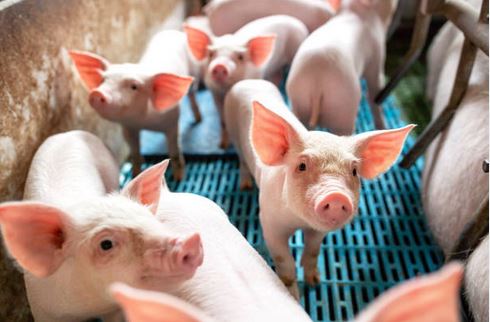Home » Posts tagged 'Vet'
Tag Archives: Vet
Pigs on the Farm – How to Raise Them for Food
For anybody with a farm or homestead, there’s a great middle ground for those who want to become self-sustainable but without the hassle that comes with raising beef cattle; pigs. Not only do they mature faster than cows, they bring more meat and also taste amazing on the other side. If you’re interested in raising pigs for food, here’s some simple steps to follow!

Step One – Research and Consider Carefully
Before rushing out and buying a handful of piglets, we first want you to stop and think for a moment. They might not be as demanding as cattle, but raising pigs is still a commitment. Do you have a pen and shelter? Small pens allow pigs to grow faster since they don’t have as much room for exercise, but it also means the ground will get torn up quickly. During rainy weather, there’s also the problem of mud and parasites growing.
With small piglets, we recommend a hog panel, pallet pen, or cattle panel. Why? Because small piglets can get through electric wire, netting, or string.
Once in the pen, you also need to think about food. For beginners, a commercial hog grower is a popular option because the piglets will grow quickly. However, there are some downsides to this because they can contain medications and they can also hold soy and corn (likely to be GMO). If you want to make your own protein or grain feed, you’ll need to invest the time. Otherwise, you might consider:
- Pre-made feed
- Growing crops such as forage turnips, pumpkin, and beets
- Local apples, table scraps, and milk
Step Two – Buy the Piglets
If you’ve done all the research and are confident you can raise pigs for food, the next step is to actually buy the piglets. In truth, it’s hard for us to suggest a price because it all depends on demand, time of year, location, and breed. Depending on the market, you might find piglets for between $75 and $125 each.
Step Three – Create a Plan
Using everything you researched in the first stage, it’s now time to create a plan. They should have a good home and fencing, but what will you feed them? At this stage, we should note the difference between measured and demand feeding.
- Measured Feeding – With this option, you decide exactly how much they eat over a given period of time.
- Demand Feeding – On the other hand, demand feeding is where you fill up the feeder and allow them to eat whenever they need it. This is the easier option for you because you only need to top up the feeder every so often.
Furthermore, you also need to think about de-worming and medicines for your piglets. If you don’t like the resistances and mutations caused by chemical de-wormers, why not try garlic in the feed? To fight infections and parasites, you can also use oregano oil.
For those with pigs of the opposite sex, it’s important to consider castration. Even if you butcher at eight months, there’s still a chance of your pig getting pregnant before this.
Step Four – Weight and Butchering
If you butcher between 180 and 250 pounds, your pig should have a hanging weight of between 160 and 225 pounds. If you’re willing to learn how to butcher a pig, you should get a good amount of meat from processing. Alternatively, you can contact a butcher and have professionals cut on your behalf.
Whichever route you choose, you end up with delicious homestead pork and will never have a need to buy it in the store again!